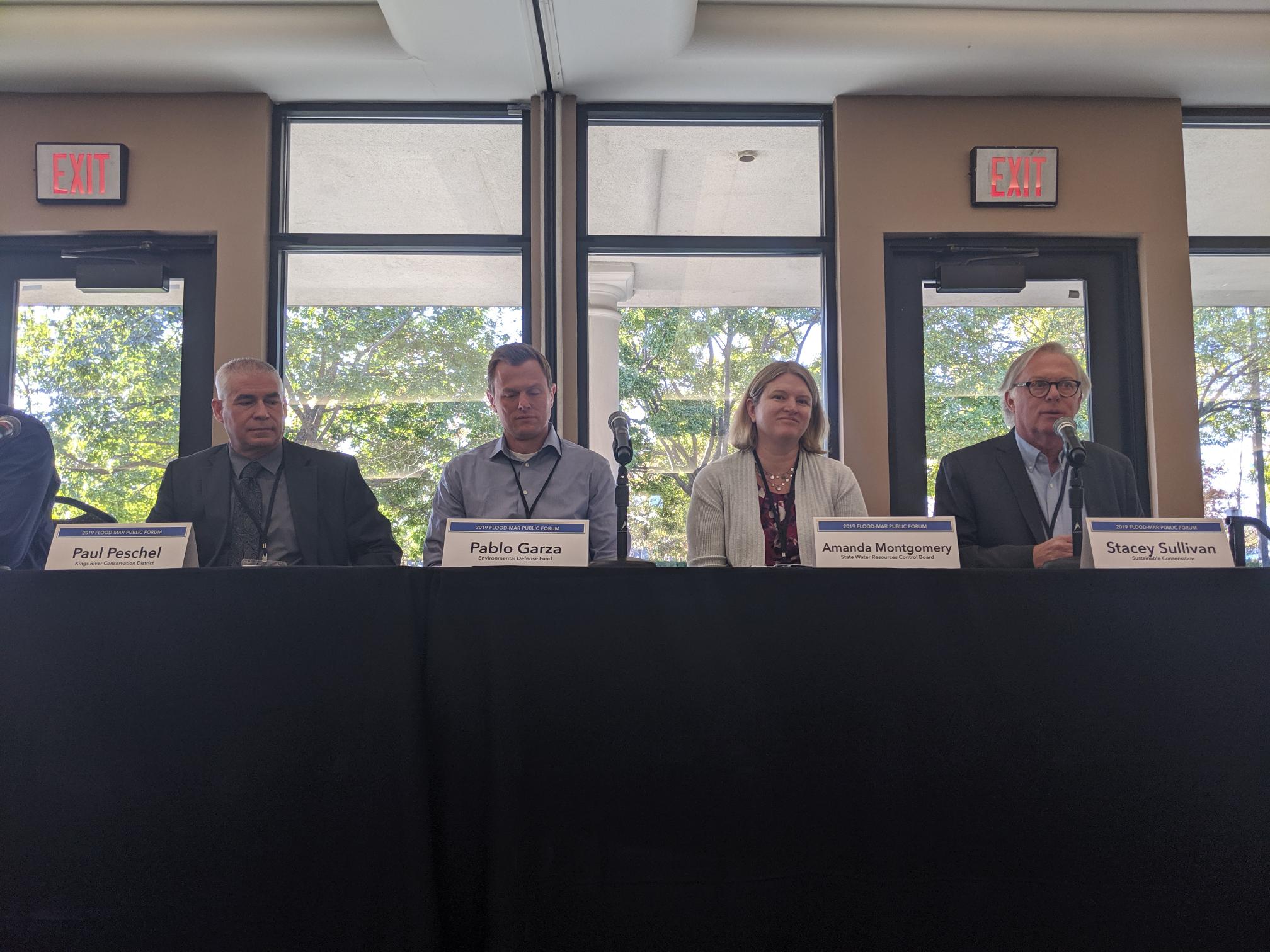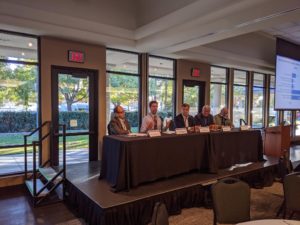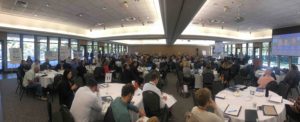
This year we’ve been hard at work alongside the California Department of Water Resources (DWR) on building a coalition of researchers, industry groups, agencies and non-profit organizations.
The goal? Replenish more groundwater across California for dry times ahead.
The strategy? Work together to identify the key questions, information gaps, incentives, policies and opportunities needed so more people can recharge groundwater in ways that bolster wildlife habitat, mitigate flood risks and boost cleaner, safer water for all Californians.
A Sustainable Path Forward

Dr. Daniel Mountjoy speaks on a panel to wrap day 1 of the forum.
We’re thrilled to announce that DWR just released the Flood-MAR Research and Data Development Plan. It encapsulates the year-long efforts of nearly 200 participants, including Sustainable Conservation staff, to support information and science aimed at using floodwater to boost groundwater replenishment. It’s a key step and a road map toward greater collaboration.
DWR and partners recently hosted a public forum to talk through the plan and its findings. The forum covered key topics like how much water’s actually available for recharge, what locations and methods are best, how to develop consistent water accounting methods, how to incentivize recharge and multiple-benefit projects, and building a collaborative Flood-MAR network to share information.
“Groundwater recharge really works best when it achieves multiple benefits and that’s things like wildlife habitat, harmonizing with farming practices, water quality, flood risk reduction and conjunctive use” – Ashley Boren, Ag Alert
Sustainable Conservation leads Ashley Boren, Dr. Daniel Mountjoy, Stacey Sullivan and Joe Choperena shared Sustainable Conservation’s near-decade-long experience with strategic coordination of groundwater recharge projects, policy and incentives across California.
Simple Idea, Complex Practice
Flooding a field or a groundwater basin might sound easy in theory, but it can be quite complicated in practice.
Where the water comes from, when it comes and how it gets to a field may seem like enough challenges, but there’s a larger framework to consider as well. Water rights, beneficial use, habitat and species considerations, flood risks, incentives, data, crop health, water quality and hydrology all come into play. Farmers, water managers and advocates who practice recharge have a lot on their plates to achieve their water replenishment goals.

A packed audience for day 2 of the Flood-MAR public forum as Stacey Sullivan moderates a panel on quantifying water available for recharge
“Now that the plan is published, we’re looking at how we can work with researchers and state agency staff to begin implementing several of the recommended actions that align with and build on our current work on groundwater recharge in California. We’ll also help guide the proposed Flood-MAR Network to ensure expanded coordination across a growing body of Flood-MAR proponents.” – Dr. Daniel Mountjoy
The more we can craft sound science, methods, incentives and policies that support groundwater recharge, and do it together, the more opportunities we’ll find for recharge across California, and the more people will benefit.
There’s never a silver bullet for success. But, collaboration across divides, mandates and policies that govern California’s complex and often contentious water reality is the only way to build a bright water future.
Flood-MAR is a serious undertaking and a promising path forward. We’re grateful to DWR for leading the way, and we’ll continue participating, researching, testing and working together to help California thrive.
